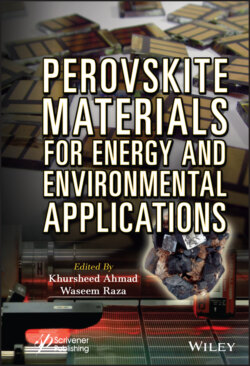Читать книгу Perovskite Materials for Energy and Environmental Applications - Группа авторов - Страница 38
2.3 Working Mechanism of PSC
ОглавлениеThe working principle of the PSC can be understood by the working of the DSSC and organic photovoltaic. In PSC, the perovskite is used as a light sensitizer, the same as dye in DSSC. The three functions performed by PSC are formation of the exciton (electron-hole pair) by the adsorption of the photon, charge transport, and charge extraction. When light falls on the perovskite, excitons are formed. Because of the difference in the binding energy of exciton of perovskite material, free carriers (free electron and hole) are formed from exciton, which can either generate current or can recombine. Because of the low recombination rate of free carriers in perovskite material and high charge mobility, the diffusion distance and lifetime of the carrier are long. And as a result, PSC is able to achieve such a high efficiency. Highly crystalline CH3NH3PbI3 perovskite material is able to achieve charge carrier diffusion length as long as 10 micrometers [9]. As shown in Figure 2.4, the electron is generated in perovskite and then moves to the electron transporting layer (ETL) and finally to the anode. Simultaneously, holes generated in perovskite, move to the hole transporting layer (HTL) and finally to the cathode. The electron migrates to the anode which can be FTO or ITO. The hole migrates to the cathode, which is either Ag or Au [10].
Figure 2.4 Working of the perovskite solar cell [11].
